|
|
MODULES
Apr 17, 2006 18:06:59 GMT -5
Post by UnklMickey on Apr 17, 2006 18:06:59 GMT -5
hi all,
i don't really have the authority to make a command decision like this,
but i will anyway.
the purpose of this thread,
is for all the simple pieces or MODULES that one would use in designing or modifying a wiring scheme.
things like:
- series / parallel switch for 2 coils
- coil split switch
- series / split / parallel switch for 2 coils
- phase switch
- etc
each post should be for just one module, and appropriately labeled, with it's function.
and, as always, we thank you for your support.
unk
|
|
|
|
MODULES
Apr 18, 2006 2:08:41 GMT -5
Post by sumgai on Apr 18, 2006 2:08:41 GMT -5
i don't really have the authority to make a command decision like this..... Oh?!  I think the following close-up speaks for itself! 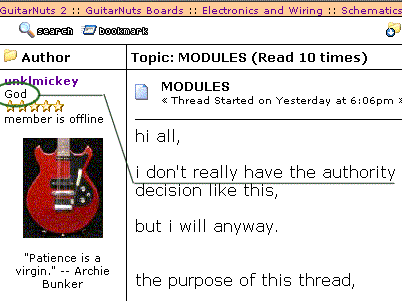 sumgai ( edited to update the image server location) |
|
|
|
MODULES
Apr 20, 2006 22:56:37 GMT -5
Post by ChrisK on Apr 20, 2006 22:56:37 GMT -5
Blend Pot Coil Split 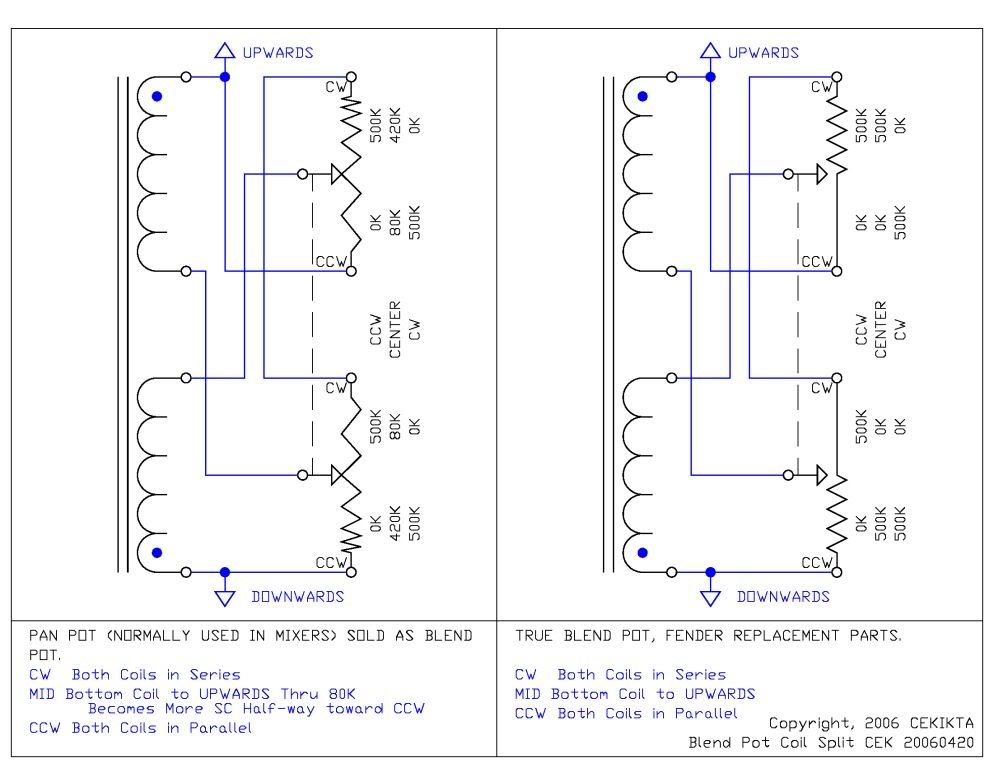 Red Rhodes (Peavey) Tone_Coil Split Pot 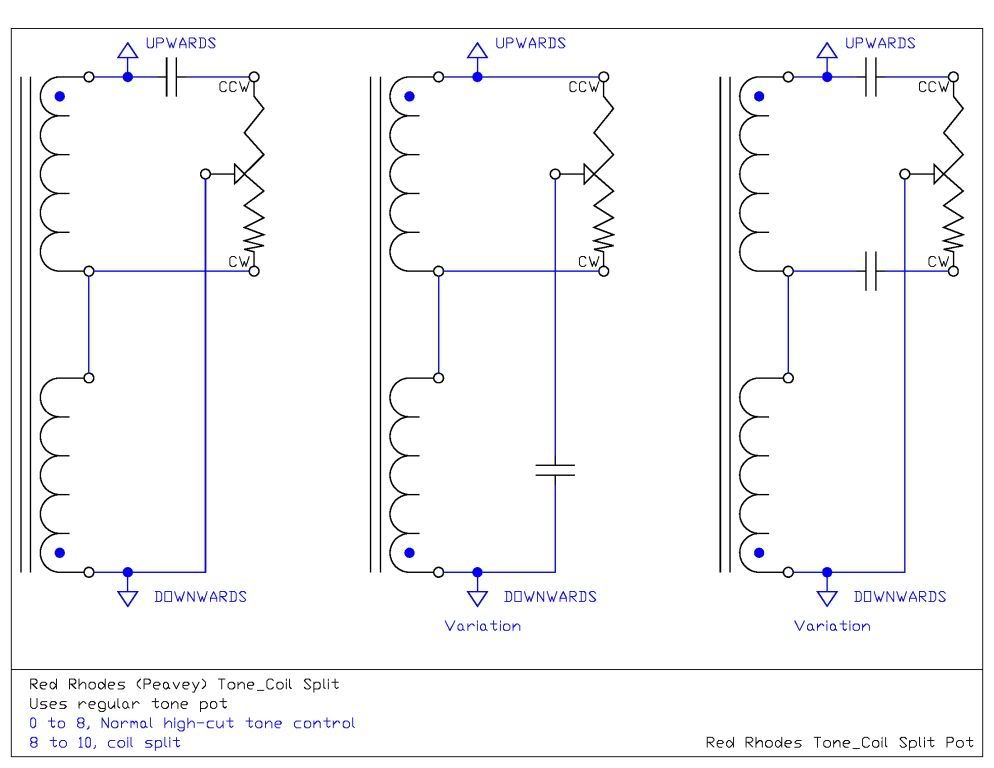 Series_Parallel Blend Pot w/ DPDT switch 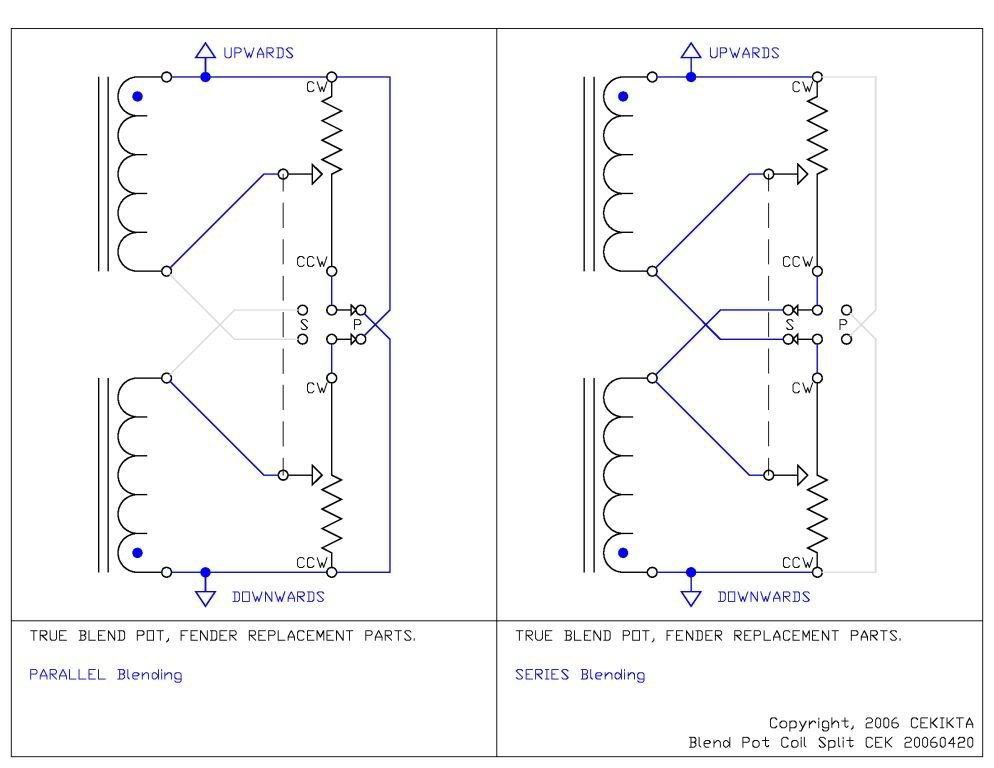 |
|
|
|
MODULES
Apr 21, 2006 15:16:34 GMT -5
Post by johan on Apr 21, 2006 15:16:34 GMT -5
This is a great idea! I did a few wirings like that, taking bits and pieces from here and there. I really really wanted something different then the humbucker split in M+B postition. It would allow more flexability and a library of these modules would be real handy in helping firsttimers out. but then were immediately back to the meta question: how to do that in a way that makes this information easily accessible to those who need it. the amount of time and effort some participants put in this board is truly amazing and not so common on message boards in general. it's a shame to let all this info go to waste. that also, I believe, why the schematic board was set up. and these are very much worth reading, but still... they deserve a web page. basic 'modules' and wirings, series-parallel etc are all explained on several known webpages: John A's, Wolf's, JohnH's. Everything's not everywhere. John A's is quite complete I think, but why did he stop updating which leads me to ask.. the schems in the schem. section. why aren't these published on John Atchley's website? Maybe a well structured links page or FAL (frequently asked links) will help us a long way. Seymour Duncan has quite a few modules on the site (not complete wirings, but parts).. is that what you mean. Strat series modStrat series split modSingle Coil Phase Reversal mod |
|
|
|
MODULES
Apr 21, 2006 17:07:36 GMT -5
Post by UnklMickey on Apr 21, 2006 17:07:36 GMT -5
Johan,
my original vision for this thread was to provide a couple of functions.
one would be so that the donated modules could be cut and pasted, all or in part, to a design that a newbie, or intermediate level designer could use to create a drawing.
since the original work would be donated by our members, who understand the purpose, these new designers would not be guilty of "stealing" someone else's work. we run the risk of offending someone, or worse, if we don't have their permission to copy and alter their drawings.
newbies could do much of the design work on their own, without putting that burden on the "senior staff".
that would free the wiring gurus up so they could spend more time checking the final product.
this would also make it easier for our intermediate members to grab onto a question and assemble a composite for a true newbie.
the other part would be, that we would have locally available drawings, that we could grab the properties of, and paste into our posts, so we could be able to answer the "how it works" questions.
this is all experimental and i don't know if RandomHero approves.
but i thought i'd try it out.
worst case, he might remove it from schematics and put it in E & W.
i'm almost tempted to copy my links thread, and post it schematics, but i need to update it. it's about 6 months out of date.
if you're interested in bringing that up to date, and organizing it in a manner that makes it more usable, RandomHero will no doubt find it more valuable, and perhaps even create a "sticky" copy to post in an easy to find place, perhaps here in Schematics or in another sub-board or something.
but, no guarantees on that. his name is on the lease. i just hang out here, and fix dinner occasionally.
unk
|
|
|
|
MODULES
Aug 11, 2006 19:29:06 GMT -5
Post by UnklMickey on Aug 11, 2006 19:29:06 GMT -5
here's a little something you might find useful:  |
|
|
|
MODULES
Sept 11, 2006 12:12:27 GMT -5
Post by UnklMickey on Sept 11, 2006 12:12:27 GMT -5
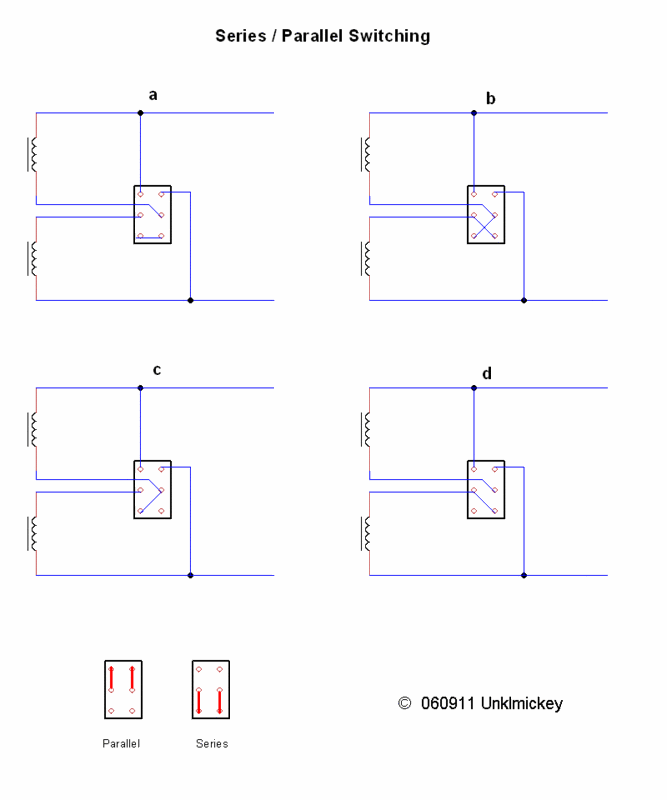 above you find 4 possible ways to do series/parallel switching of 2 coils or 2 pickups. version (a) is most commonly seen, it's okay but i think it could be better. it requires the series path to go first through one of the two lower contacts, then through the other. version (b) is a bit of silliness i put together. since the series path uses both lower contacts, in parallel, that should make it more reliable, right? BFD. save the extra wire. version (c) is okay i think version (d) should be the universally used method. 3 days worth of atta-boys for the first person who can send me a PM explaining why (d) is so "universal". (any non-god, with the right answer within the first 2 days will get the K even if a god is first.) regardless of when (or if) i get a correct answer, i'll post the reason Friday. PLEASE DO NOT POST THE ANSWER ON THIS THREAD!unk EDIT:well even with a 2 day head-start, no one beat ChrisK to the punch on this one. he was still the first one with the correct answer. 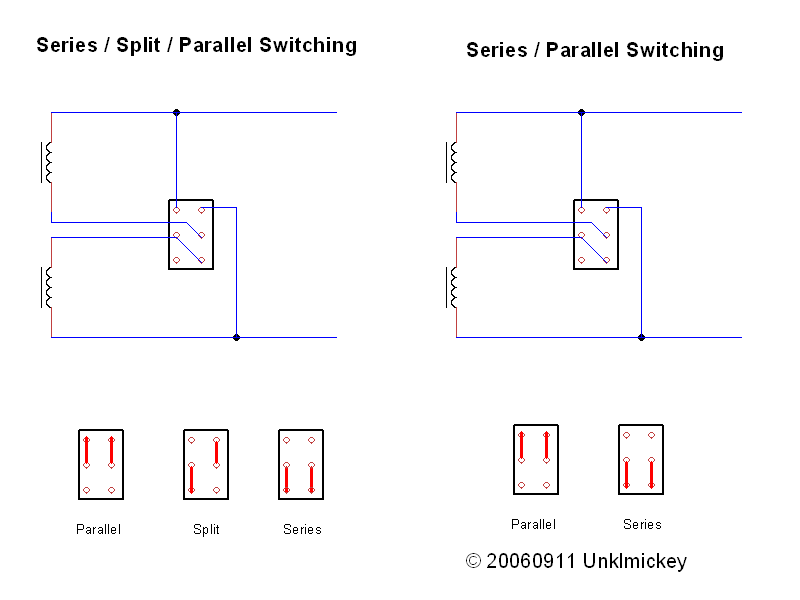 note that the only difference between the 2 circuits, is the switch itself.the switch on the left: DPDT ON-ON-ON, the switch on the right: DPDT ON-ON. |
|
|
|
MODULES
Sept 15, 2006 9:24:16 GMT -5
Post by UnklMickey on Sept 15, 2006 9:24:16 GMT -5
i thought i'd post another diagram. although it could be used as a complete wiring system, i included this on the module thread. it's more likely to be used (minus the tone and volume) as one portion of a much larger scheme. i actually have posted something nearly identical to this, in an old thread, as a pictorial. anyone recognize it, and what it does? 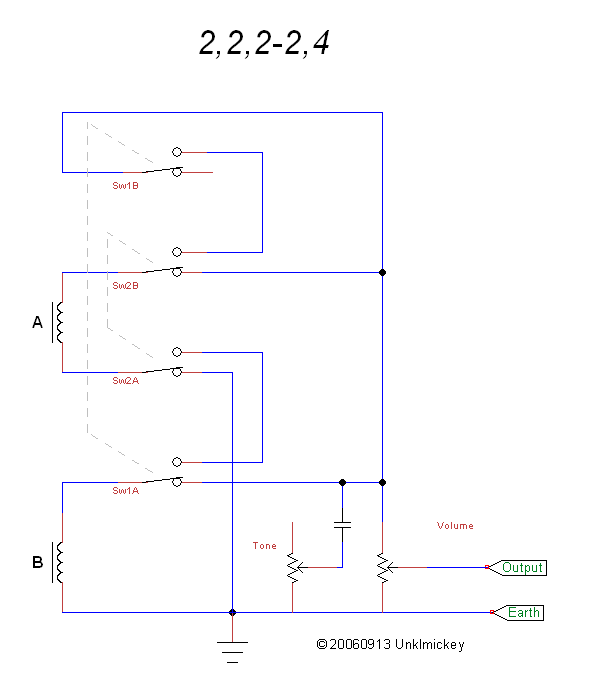 |
|
|
|
Post by pete12345 on Mar 1, 2008 7:37:48 GMT -5
Both switches down gives you both coils in parallel
Switch1 up gives you coil A only
Switch2 up gives you coil B only
Both switches up gives you both coils in series
It's a handy way to control 2 pickups with 2 DPDT switches. It could also be used to switch, for example a middle pickup with the switched combinations of neck and bridge.
Pete
|
|
|
|
MODULES
Mar 2, 2008 15:24:37 GMT -5
Post by ChrisK on Mar 2, 2008 15:24:37 GMT -5
|
|
col
format tables
Posts: 474
Likes: 25
|
MODULES
Jan 19, 2014 2:03:58 GMT -5
Post by col on Jan 19, 2014 2:03:58 GMT -5
|
|
|
|
MODULES
Jan 19, 2014 16:50:56 GMT -5
Post by newey on Jan 19, 2014 16:50:56 GMT -5
Col-
Your approach to the puzzle is interesting. I guessed he was pointing to the binary tree thread because that was the answer to the question unk posed, and which pete12345 correctly answered. Both the threads you linked to deal with using switches (of various types) for parallel-off-series, but there are a number of "dead links" in those discussions, so who knows whether one of those led back to the binary tree as well.
I have used a two-binary-tree scheme on my 4-pickup "4caster" and it works well although it takes a bit of getting used to. With 4 pickups, two levels of binary tree (meaning 6 DPDTs) could have given me all series/parallel options, but lack of real estate in the cavity led me to use only the two binary trees (each tree governs two of the four pickups); the two "trees" are then combined only in parallel by a three-way toggle. So, it won't do all in series, or series combos of parallel pairs.
|
|